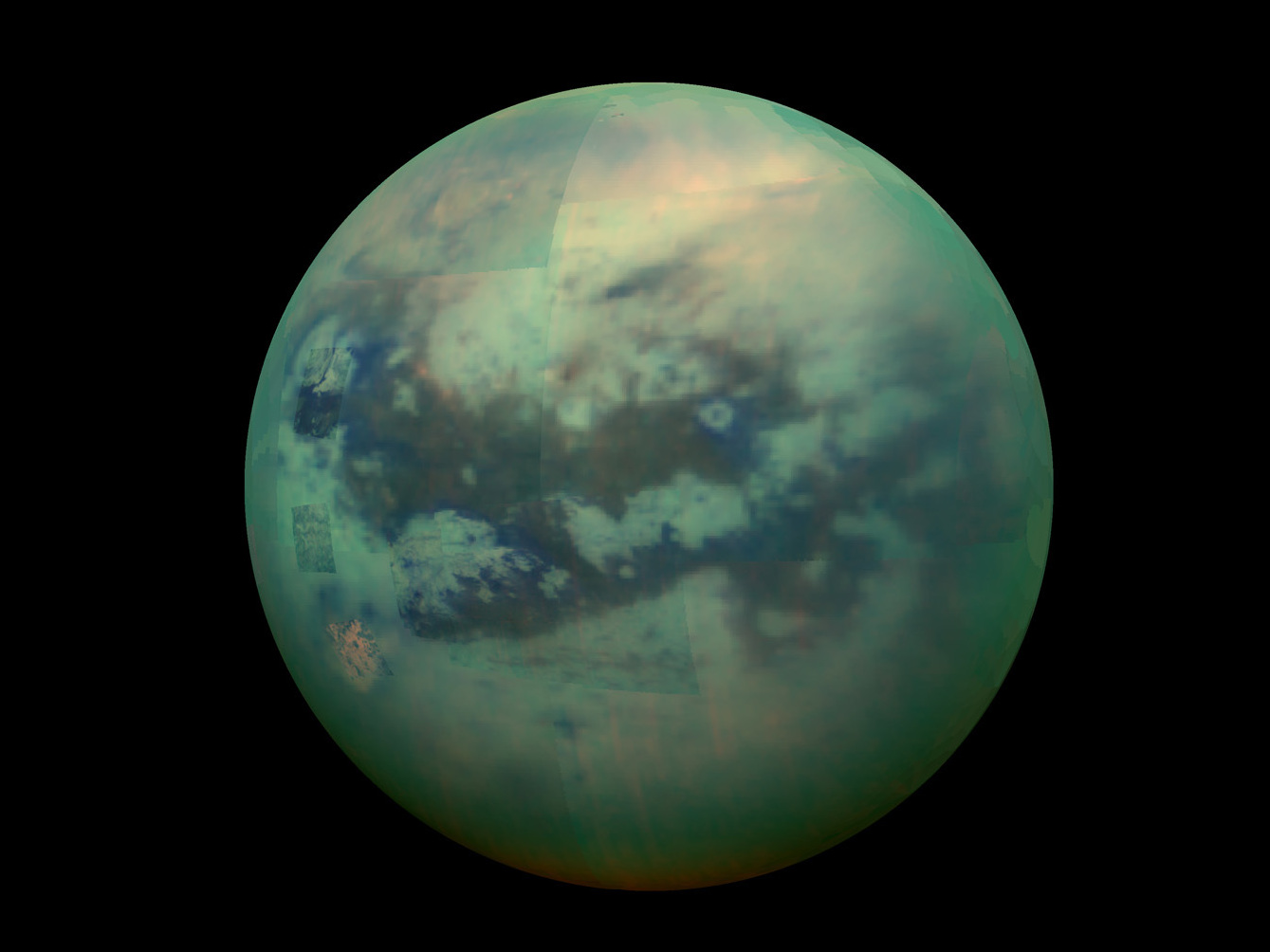A new study shows that Saturn’s moon Titan may have a crust of methane ice 10 kilometers thick. Somewhere beneath it, there may be matter in a liquid state. This means that the depths of the moon are warmer than previously thought.

Methane crust on Titan
Saturn’s largest moon, Titan, is the only place besides Earth that has an atmosphere and liquids in the form of rivers, lakes and seas on the surface. Due to the extremely low temperature, the liquids on Titan are composed of hydrocarbons such as methane and ethane, and the surface is solid water ice.
A new study published in the Planetary Science Journal, led by planetologists at the University of Hawaii at Manoa, has found that methane gas may also be trapped inside the ice, forming a distinct crust up to six miles thick that warms the underlying ice shell, and may also explain Titan’s methane-rich atmosphere.
A research team led by researcher Lauren Schurmeier, which also includes doctoral student Gwendolyn Brouwer, and Sarah Fagents, deputy director and research associate at the Hawaii Institute for Geophysics and Planetology (HIGP) at the UH Mānoa School of Ocean and Earth Science and Technology (SOEST), has found Titan’s impact craters hundreds of meters deeper than expected, and that only 90 craters have been found on this moon.
“This was very surprising because, based on other moons, we expect to see many more impact craters on the surface and craters that are much deeper than what we observe on Titan,” said Schurmeier. “We realized something unique to Titan must be making them become shallower and disappear relatively quickly.”
Modeling of Titan’s structure
To figure out this mystery, the researchers checked with a computer model to see how Titan’s topography might recover after a collision if the icy shell was covered with a layer of insulating methane clathrate ice, a type of solid water ice with methane gas trapped in a crystalline structure.
Since the initial shape of Titan’s craters is unknown, the researchers modeled and compared two likely initial depths based on fresh craters of similar size on the icy moon Ganymede.
“Using this modeling approach, we were able to constrain the methane clathrate crust thickness to 5 to 10 kilometers because simulations using that thickness produced crater depths that best matched the observed craters,” said Schurmeier.
Methane-rich atmosphere
Estimating the thickness of the methane ice shell is important because it could explain the origin of Titan’s methane-rich atmosphere and help researchers understand its carbon cycle, liquid methane-based “hydrologic cycle,” and variable climate.
“Titan is a natural laboratory to study how the greenhouse gas methane warms and cycles through the atmosphere,” said Schurmeier. “Earth’s methane clathrate hydrates, found in the permafrost of Siberia and below the arctic seafloor, are currently destabilizing and releasing methane. So, lessons from Titan can provide important insights into processes happening on Earth.”
Titan’s structure
Titan’s topography makes sense in light of these new discoveries. And the limited thickness of the methane clathrate ice crust indicates that Titan’s interior is probably warm rather than cold, hard and inactive, as previously thought.
“Methane clathrate is stronger and more insulating than regular water ice,” said Schurmeier. “A clathrate crust insulates Titan’s interior, makes the water ice shell very warm and ductile, and implies that Titan’s ice shell is or was slowly convecting.”
“If life exists in Titan’s ocean under the thick ice shell, any signs of life (biomarkers) would need to be transported up Titan’s ice shell to where we could more easily access or view them with future missions,” Schurmeier added. “This is more likely to occur if Titan’s ice shell is warm and convecting.”
Due to NASA’s Dragonfly mission to Titan, which is scheduled to launch in July 2028 and arrive in 2034, researchers will be able to make near-surface observations of this moon and further explore the icy surface, particularly the Selk crater.
Provided by phys.org


